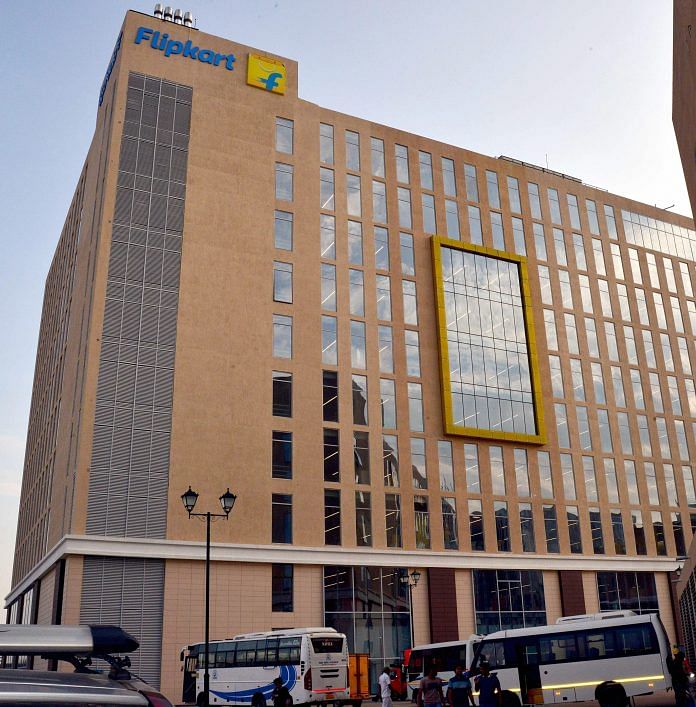Considering the fact that Walmart has failed to build up its own Indian business in 11 years, the deal represents a second-best outcome at most.
Walmart Inc. might want to portray its $16 billion purchase of India’s largest e-commerce firm, Flipkart Group, as a brilliant strategic move, long-planned in secret, that would allow the U.S. retail giant to manage the transition away from big-box stores globally. Yet, the truth is that the deal represents a second – best outcome – if that -for Walmart as well as for Indian consumers and farmers.
In the 11 years that Walmart has operated in India, it’s signally failed to build up its own business. That’s not entirely the company’s fault. In fact, it’s a reminder that India remains, in some ways, as inhospitable to foreign businesses as the People’s Republic of China.
QuicktakeIndia’s Aspirations
For over a decade, successive Indian governments have denied permission to Walmart – and peers such as Carrefour SA – to open up their own stores. Foreign investors can enter into partnerships with local retailers-Walmart had one with Bharti Enterprises Pvt. Ltd. but they can’t control the consumer-facing end of the business, and their supply chains are subject to fearsome additional regulations. When foreign investment in supermarkets was finally permitted in 2012, for example, the previous government required any major, foreign-backed outlets to source 30 percent of the processed or manufactured goods they sold – by value – from tiny Indian enterprises worth less than $1 million apiece. The government also blocked companies such as Walmart from expanding into small-town India, restricting them to cities with populations over 1 million people.
It’s no coincidence that Walmart closed its deal with Flipkart now. Its joint venture with Bharti went bad a few years ago. And, in January, the possibility of having its own stores seemed finally to have closed, after the government made it marginally easier for single-brand retailers such as Ikea Group to open up stores in India but left restrictions on multi-brand retailers untouched. Even the relatively investment-friendly administration of Prime Minister Narendra Modi appears to be afraid of Walmart, possibly because the strongest political support for Modi’s party has always come from small shopkeepers. Clearly, the company needed another strategy.
Walmart would’ve struggled to open its own e-commerce business as well, given that India doesn’t permit foreign investment in online retailing. All you can set up are “marketplaces.” So Amazon India can’t hold any of its own stock, and Indians can’t buy directly from Amazon. Instead, Amazon works in India like eBay, serving as a clearinghouse for other people’s goods; it’s forbidden from holding any inventory of its own. It can’t even provide easy refunds.
This is just one way in which Walmart’s narrative about the Flipkart acquisition – that operating in the giant and growing Indian online market will help it acquire an understanding of how e-commerce works – is frankly unbelievable. The Indian e-commerce sector is, thanks to absurdly restrictive government policies, completely different from anywhere else.
And the Indian consumer expects different services as well. Flipkart’s great innovation was to offer cash on delivery for the stuff they sold. Indians are justifiably suspicious of courier services and demand to hold the item they’re buying in their hands before they disburse their hard-earned money. Even after Modi withdrew most of India’s cash in November 2016, almost two-thirds of Indians still use COD. According to Nielsen, 83 percent of Indians – and 90 percent in smaller towns – prefer cash as a method of payment. This has a ripple effect on logistics, profitability and capital requirements. More importantly perhaps, it isn’t exactly how e-commerce works outside some developing countries. I’m uncertain if anything Walmart learns from Flipkart’s operations in India will be applicable in more mature markets.
Finally, the deal is a sad sign for Indian consumers and producers. If Walmart had $16 billion to invest in India, the money would’ve served Indian consumers better had it gone into stores that secured the supply chain for the basic goods, especially fresh produce, that are a big component of poorer Indians’ consumption basket. Chronic under-investment in farm-to-table supply chains means that Indians otherwise have to deal with high and sharply fluctuating food prices. Farmers, too, would have gotten a better deal.
Instead, Indian bureaucrats remain too short-sighted, too statist and too distrustful of foreign companies to allow such a thing. So we’ll have to settle for a distant second-best when it comes to Walmart’s India operations. This deal isn’t a sign that India’s leapfrogging past big-box stores to some digital retail utopia. It’s yet another indictment of Indian politicians’ limited vision. -Bloomberg opinion







Nice